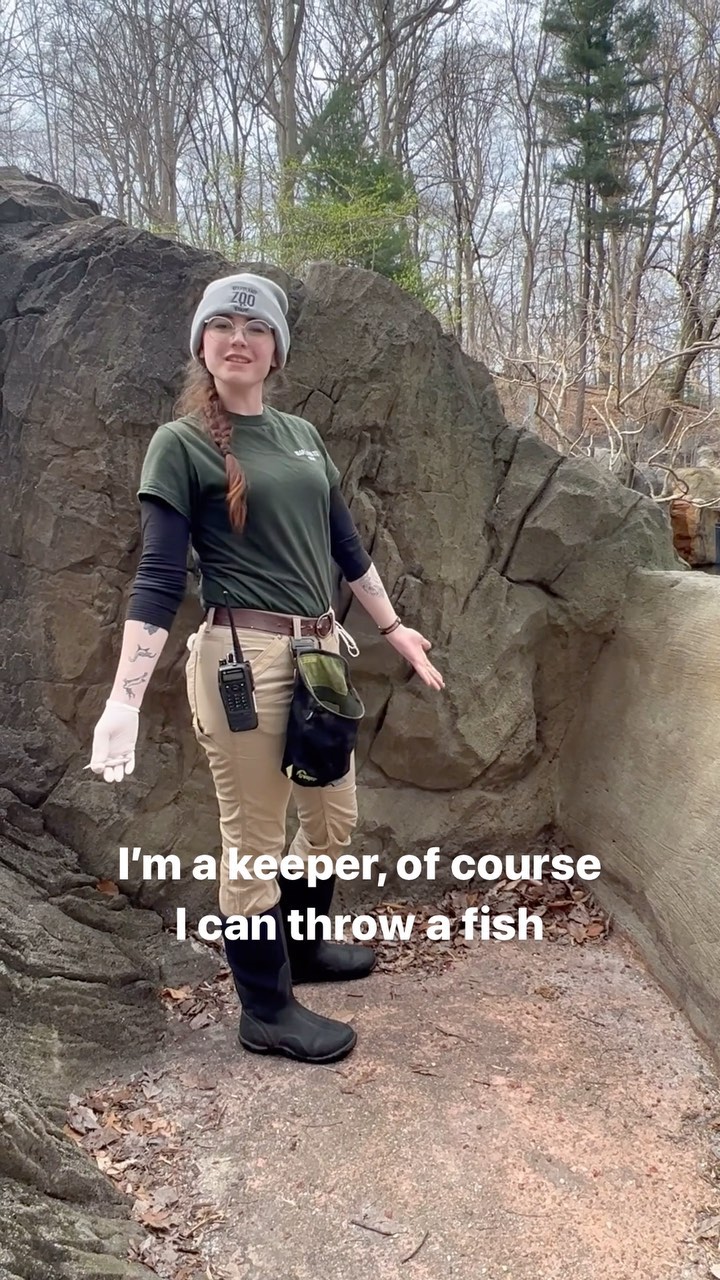– Examining the “We think they’re all keepers” phrase from Instagram’s digital vernacular and its implications for zoo management and wildlife conservation.
– The role of social media, particularly Instagram, in promoting wildlife conservation and education.
– Integrating traditional zoology knowledge and modern zoo management practices to enhance the welfare of animals in captivity.
– Expanding the reach and impact of wildlife conservation efforts through strategic use of social media platforms.
– Addressing the ethical considerations of representing wild animals on social media.
Social media has become a pivotal element in the conversation around wildlife conservation and zoology education, with platforms like Instagram offering glimpses into the otherwise near-inaccessible lives of wild and captive animals. The phrase “We think they’re all keepers” from Instagram isn’t just a casual expression—it encapsulates an evolving attitude towards the presentation and treatment of animals within society.
This playful phrase can be dissected into a more literal meaning within zoology and zoo management. In this setting, ‘keepers’ refers to the dedicated individuals who care for the animals’ daily needs—feeding, cleaning, and engaging in activities that enrich the animals’ lives. Their role is fundamental in ensuring animals’ physiological and psychological well-being in zoos and animal sanctuaries.
When wildlife is shared on platforms like Instagram with captions suggesting that every animal is a keeper, it reflects a broader commitment to value all creatures, regardless of their appeal to visitors or rarity. This inclusive attitude aligns perfectly with the ideals of modern zoo management, which emphasize the importance of every species in the ecological tapestry, framing biodiversity as a crucial asset to preserve.
Social media’s potential to create intimate connections between the public and wildlife can be a double-edged sword. On one hand, it can foster a love and respect for nature in its audience, often inspiring people to support conservation initiatives. For instance, engaging content might encourage viewers to contribute to habitat preservation efforts or dissuade them from purchasing products that harm at-risk species. Digital platforms provide the opportunity for education on a mass scale, transforming passive viewers into informed advocates for environmental protection.
However, how animals are depicted on social media must be managed carefully. Presenting wildlife through the lens of human narratives can lead to anthropomorphism, where animals are assigned human emotions and characteristics. While this might help generate an immediate connection with viewers, it can also create misconceptions about the nature of these wild beings and their roles within ecosystems. There’s a delicate balance to strike in ensuring educational content is engaging and scientifically accurate.
Keeping in line with this, zoos and wildlife sanctuaries are increasingly adopting practices that mirror natural habitats and encourage natural behaviors in animals. The aim is to make captivity as enriching as possible. Enrichment can come in varied forms: physical (like climbing structures or swimming pools), sensory (like scents or new sounds), food-related (puzzles that make animals work for their meals), or social (introducing new companions or group dynamics). All these efforts are designed to enhance the creatures’ well-being and provide guests with a more authentic understanding of their lives.
Furthermore, progressive zoo management embraces conservation’s role beyond their institutions’ enclosures. They participate in breeding programs, reintroduce species into the wild, and support field conservation projects. Social media serves as a bridge to communicate these often unseen efforts, raising awareness and galvanizing public support.
In the realm of ethics, portraying animals on social media requires sensitivity. These platforms grant us the privilege of peering into the lives of creatures we might never encounter otherwise. Yet, the imagery and stories shared must respect the intrinsic value of wildlife and avoid reducing them to mere spectacles. This can involve decisions about what moments to share and the context provided for these snapshots of animal life. The narratives should honor the integrity of the wild beings and not simply project human desires or stories onto them.
As the saying “We think they’re all keepers” reverberates across digital channels, it reflects a changing tide in zoology, zoo management, and conservation. Animals are no longer seen solely as exhibits but as ambassadors for their wild counterparts and integral parts of a global ecological network that we strive to fully understand and protect.
Navigating the challenges of representing animals online involves an intersection of zoology, ethics, and digital literacy. By leveraging technology’s potential to inform and inspire and combining it with an unwavering commitment to the facts and integrity of the animal kingdom, digital platforms can become powerful allies in the mission to conserve our planet’s precious wildlife.
This is why each time an Instagram user encounters a reel or post with the enthusiastic proclamation, “We think they’re all keepers,” it’s not just a celebration of the individual animals in the frame. It’s a reminder of the sheer diversity of life that zoos, biologists, and conservationists work so hard to understand, protect, and cherish. It’s a message sent out into the digital ether that every creature, from the smallest insect to the largest whale, plays a part in our world’s astounding biological mosaic—a message that, through education and engagement, can turn casual viewers into a legion of wildlife custodians.
*****
Source Description
We think they’re all ✨keepers✨


